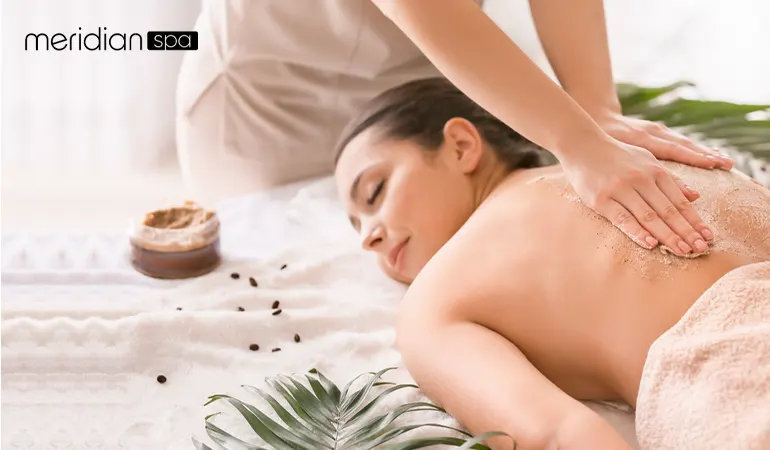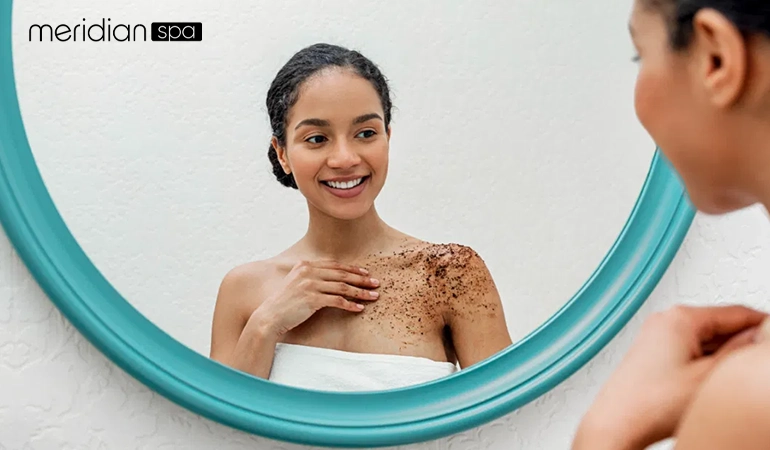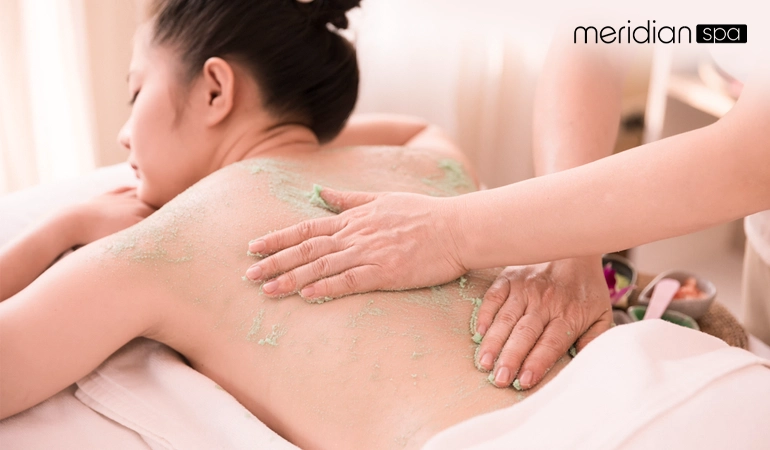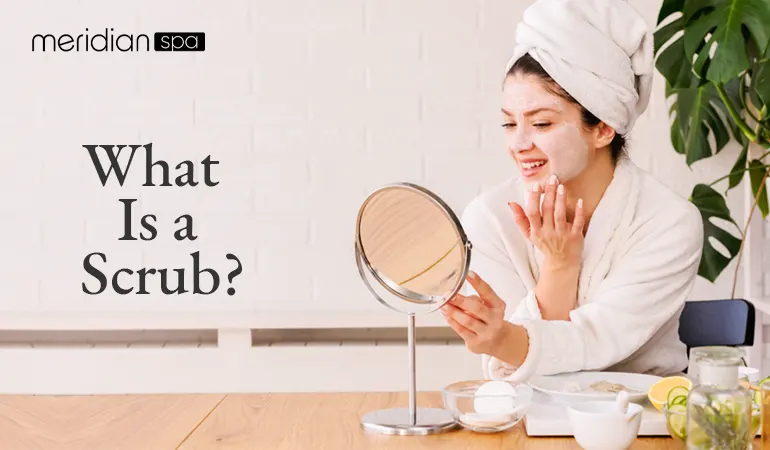If you have ever browsed the skincare aisle at your local drugstore or department store, you have likely come across a plethora of products claiming to “scrub” away dead skin cells and leave you with glowing, radiant skin.
But what exactly is a scrub in the beauty industry, and why is it important to include it in your skincare routine? Find your answer here.
What is a Scrub?

A scrub in the beauty industry is a product that is used to exfoliate the skin, typically by getting rid of lifeless skin cells and unclogging pores. It is characteristically made with a combination of fine granules, fruit enzymes, and oils, which work together to slough away lifeless skin cells and refresh the skin gently.
Scrubs are often used on the face, body, and hands and are usually applied in a circular motion before rinsing off with water. They are an important part of many skin care practices, as they help to recover the feel and tone of the skin and can also aid in preventing breaks and other skin issues.
Types of Scrubs

Scrubs, also known as exfoliants, are products used to eliminate dead skin cells and unblock pores. There are 3 major scrubs: physical scrubs, chemical scrubs, and enzyme scrubs.
1. Physical scrubs
Physical scrubs are made with grains or elements that substantially exfoliate the skin. This can include ingredients such as sugar, salt, or ground nuts. Physical scrubs can be punitive on the skin and must be used carefully, mainly on sensitive skin.
2. Chemical scrubs
Chemical scrubs can be gentler on the skin and are suitable for all skin types. Chemical scrubs use chemical reactions to break down dead skin cells. These types of scrubs often comprise beta hydroxy acids (BHAs) or alpha hydroxy acids (AHAs).
3. Enzyme scrubs
Enzyme scrubs use enzymes to dissolve dead skin cells. These types of scrubs are often made with ingredients such as papaya or pineapple and are appropriate for all skin types, counting sensitive skin.
Benefits of Scrubs

Scrubs, also known as exfoliants, are products used to eliminate lifeless skin cells and unclog pores. There are numerous benefits to using scrubs as part of your skincare routine, including:
1. Removing dead skin cells and unclogging pores
Dead skin cells can backlog on the skin’s surface, resulting in blocked pores and a dull appearance. Scrubs help to remove these dead skin cells, allowing for flatter and more radiant skin.
2. Improving circulation and promoting skin cell turnover
Scrubs can improve circulation to the skin, leading to an increase in skin cell turnover. This can help to keep the skin looking youthful and healthy.
3. Improving the appearance of acne and scarring
Scrubs can benefit unblocking pores, making them an operative treatment for acne-prone skin. Moreover, exfoliating the skin can aid in smoothing out the look of scars and uneven skin tone.
4. Refining The Overall Texture And Skin Tone
Regular scrub use can help improve the overall feel and tone of the skin, resulting in a smoother, more youthful-looking complexion.
5. Abating the appearance of wrinkles and fine lines
Exfoliating the skin can help to activate collagen production, which can help to reduce the appearance of wrinkles and fine lines.
6. Brightening the skin
Scrubs can help to brighten the skin and give it a glowing, radiant appearance.
7. Promoting better absorption of skincare products
Scrubs can aid in sloughing away dead skin cells and unclogging pores, allowing for better absorption of skincare products.
Overall, incorporating a scrub into your skincare routine can lead to restored, more glowing skin. Just be sure to pick a product suitable for your skin’s nature and apprehensions and use it cautiously to avoid irritation or damage.
How To Use a Scrub in the Best Way?

To use a scrub in the best way, follow these steps:
- Determine the appropriate frequency for use based on your skin type and sensitivity. Most people can use a scrub once or twice a week, but those with sensitive skin may need to use it less frequently.
- Start with a clean, dry face. This ensures that the scrub can effectively remove dead skin cells and unclog pores.
- Massage the scrub in circular motions onto the skin, avoiding the eye area. This helps to improve circulation and promote skin cell turnover.
- Rinse off with lukewarm water. Warm water can strip the skin of its usual oils and cause irritation, so it’s best to use lukewarm water when rinsing off a scrub.
- Follow with a moisturizer. After using a scrub, it’s important to moisturize the skin to help hydrate and protect it.
- Choose a scrub that is appropriate for your skin type and concerns. If you have subtle skin, choose a chemical or enzyme scrub. If you hold skin that is acne-prone, look for a scrub incorporating salicylic acid.
- Avoid using punitive or rough particles. These can be harmful to the skin and can lead to irritation.
- Read the label and choose a scrub with natural and non-toxic ingredients. This will help ensure that you are using a safe and effective product for your skin.
- Consult with a skin doctor or skincare professional like Meridian Spa if you have any issues with using a scrub or if you have sensitive or damaged skin. They can help to determine the best skincare routine for your individual needs.
Cautions To Use Scrubs

While scrubs can be a great addition to a skincare routine, caution is important. Here are a few things to consider:
Frequency of use: It’s important to determine the appropriate frequency for using a scrub based on your skin type and sensitivity. Overuse can lead to irritation and damage to the skin.
Type of scrub: Physical scrubs can be punitive on the skin and should be used watchfully, particularly on sensitive skin. Chemical and enzyme scrubs tend to be gentler and more appropriate for every skin type.
Ingredients: Make sure to read the labels and choose a scrub with natural and non-toxic ingredients. Avoid products with harsh or abrasive particles, as these can damage the skin.
Avoid the eye area: When using a scrub, be sure to avoid the eye area as the skin around the eyes is a lot more delicate and prone to irritation.
Follow with moisturizer: After using a scrub, follow with a moisturizer to help hydrate and protect the skin.
Conclusion
Scrubs can be a beneficial addition to a skincare routine when used properly. The above discussion makes it easy to grasp what scrubs are used for beauty treatments. Before getting a scrub treatment, or using a scrub, consult with your skin specialist to stay safe from any kind of skin issues otherwise.
Frequently Asked Questions
1. How Often Should I Get a Body Scrub Treatment?
The frequency of getting a body scrub treatment depends on the results you want from it. If you just want it for regular skin upkeep, it will be vital to go for a scrub every three to four weeks. However, twice a month will be the ideal frequency if you want to get it for resolving issues like rough and uneven skin.
2. What Should I Not Be doing after exfoliating?
Do not wash it right away after exfoliating. The active ingredients of the scrub will take some time to get absorbed into your skin to do their trick. Wait for at least 15 to 30 minutes before washing the exfoliated area of your skin.
3. How Can I Determine That I’m Over-exfoliating?
You are over-exfoliating if you find the signs like irritation, peeling, burning, redness or inflammation, small pimples, or increased sensitivity in the respective areas of the body to other products in your routine.
4. Can Exfoliating Make My Skin Glow?
Yes, as exfoliation helps your skin get rid of the dead skin cells and let your skin reflect the light, it can help you achieve a glowing and smoother complexion.
